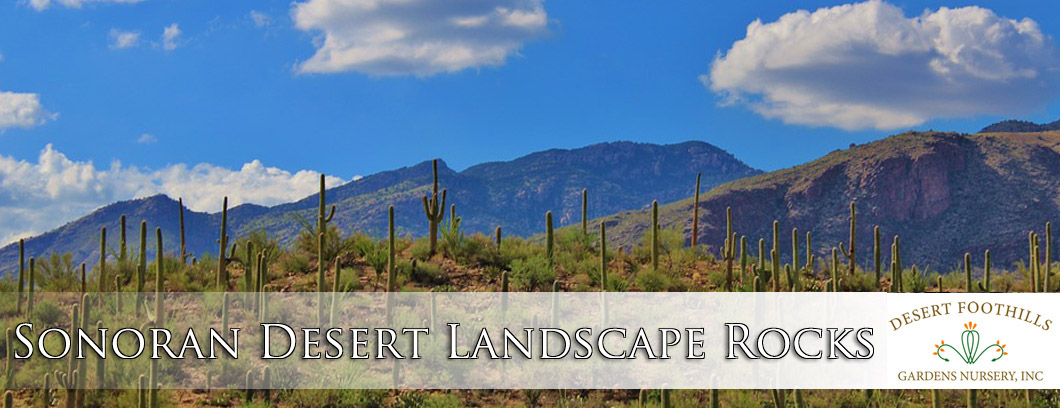Popular Decorative Rocks in Arizona Gardens
Popular Decorative Rocks in Arizona Gardens
If you’ve been to an Arizona yard for more than five minutes, you’ve probably seen how many rocks are there. Not only can rocks be used to “fill in,” but they can also add drama, texture, color, and function to desert-friendly settings. We love helping people at Desert Foothills Gardens choose the right rocks for our hot, dry conditions that also look great. These are some of the most famous rocks used as garden decoration in Arizona. Find out why people like them, where to use them, and what to watch out for.
1. Crushed Granite / Decomposed Granite
This is a very popular choice for groundcover, patios, and paths. It normally has a tan-red color that goes well with desert colors. Decomposed limestone is soft on the feet, great for drainage, and not too expensive. It keeps surfaces from washing away and keeps them solid because the particles are small and the surface looks natural.
2. River Rock
River rock gives things a finished look because it is smooth, rounded, and usually bigger. It is often used by gardeners in dry creek beds, as accents around plants, or to make paths that look interesting. It keeps the dirt from washing away and adds contrast with different colors and textures, as well as with plants or rocks that are sharper.
3. Flagstone
Do you want stepping stones or a patio made of natural stone? Flagstone is very good. Usually made of sandstone, it is made up of very flat slabs that are split into layers. Because it is flat, it works well for walkways, patios, and as accents in garden walls. Because cobblestone is flat, it makes it less likely that someone will trip, and it looks very solid.
4. Marble Chips
The chips are shiny and a light color. They reflect light nicely. If you want to make the scene brighter, especially in places that are shaded or close to buildings, they can help. Note: The color of the light and the way it reflects off of them mean that the tone can warm up or change based on the lighting. Also, because marble is alkaline, they shouldn’t be used near plants that like acidic soil.
5. Lava Rock
Lava rocks add a lot of depth because they are bold, dramatic, and a bit “textured.” Because it is porous, it can hold some water and help keep the soil’s top temperature stable. Its rough, dark look can also look great with plants or lighter stones. Great for highlights, borders, or making beds look nicer.
6. Pea Gravel
Pea gravel, which is made up of small, round pieces that are usually about 1/8-inch thick, is smooth, fun, and smooth. It works great as groundcover when you want good drainage and texture. It’s easy to walk on (even barefoot!) because it’s small, but in Arizona you should think about how hot it will be. Gravel that is darker soaks up more sunlight, so light colors help
7. Boulders & Large Accent Stones
Rocks are the best way to say “wow.” Outcroppings, sitting walls, and edges are all natural places for big stones to act as focal points. They hold the landscape plan together. Desert Foothills Gardens sells big rocks, desert rock, and minerals that people can use to make gardens with natural “resting points.”
Things to Think About
Rocks, especially dark ones with smooth sides, take in heat during the day and give it off at night. It can warm the soil and air around them, so keep that in mind if you put them near plants that are easily hurt or in an area where you walk a lot.
Color consistency: If you need to add more rock in the future for fixes or growth, you’ll want the colors to match. Different quarries. If you can, buy extra when you setup so you have extras on hand.
If you put rocks in the right place, they can help water drain away or move it to a different area. Think about hills, paths of runoff, and how water moves across the land.
Plants and softscapes should be balanced. If you use too much rock, you could end up with a “rock desert,” which means there isn’t much life or growth. Adding low-water, shade-tolerant plants or groundcovers breaks things up in a way that looks good and is good for the environment.
Rock Solid Conclusions
Decorative rocks aren’t just filler; they’re essential to making an Arizona-friendly yard that looks good, serves a purpose, and is interesting. There are many choices, such as the smooth edges of broken granite, the shine of marble chips, the stark contrast of lava rock, or a beautiful boulder as the center of attention. We’re here at Desert Foothills Gardens to help you decide what’s best for you and your yard.
Keywords: decorative rocks, Arizona gardens, desert landscape rock, landscaping rocks Arizona, decorative boulders, decomposed granite, river rock, flagstone, lava rock, marble chips.
Sources:
-
“Types Of Rocks For Landscaping” – Desert Foothills Gardens. Desert Foothills Gardens Nursery Inc.
-
“Sonoran Desert Landscape Rocks” – Desert Foothills Gardens. Desert Foothills Gardens Nursery Inc.
-
MDI Rock, The Best Rock Groundcover For A Desert Landscape. MDI Rock
-
Arizona Trucking & Materials – Tucson Decorative and Landscaping Rocks. Arizona Trucking and Materials
Decorative Rocks Rocks Arizona
If you are interested in increasing the beauty of your landscape by buying desert rocks, stop by our convenient location at 33840 N. Cave Creek Rd., in Cave Creek, give us a call at (480) 488-9455 to schedule a visit to your home.



